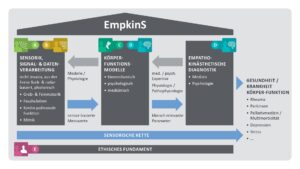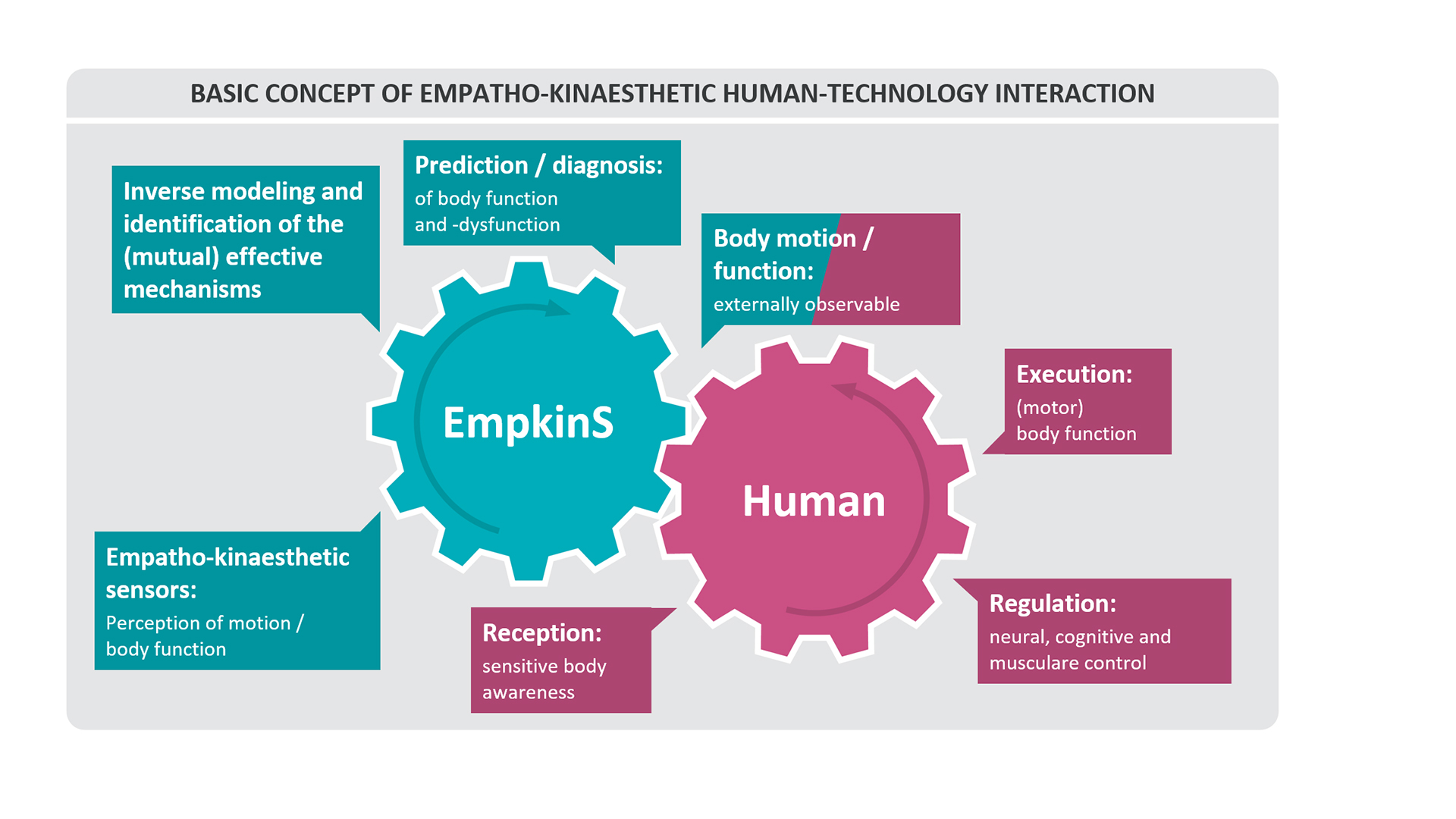Overview
EmpkinS will investigate novel radar, wireless, depth camera, and photonics-based sensor technologies as well as body function models and algorithms. The primary objective of EmpkinS is to capture human motion parameters remotely with wave-based sensors to enable the identification and analysis of physiological and behavioral states and body functions. To this end, EmpkinS aims to develop sensor technologies and facilitate the collection of motion data for the human body. Based on this data of hitherto unknown quantity and quality, EmpkinS will lead to unprecedented new insights regarding biomechanical, medical, and psychophysiological body function models and mechanisms of action as well as their interdependencies.
The main focus of EmpkinS is on capturing human motion parameters at the macroscopic level (the human body or segments thereof and the cardiopulmonary function) and at the microscopic level (facial expressions and fasciculations). The acquired data are captured remotely in a minimally disturbing and non-invasive manner and with very high resolution. The physiological and behavioural states underlying the motion pattern are then reconstructed algorithmically from this data, using biomechanical, neuromotor, and psychomotor body function models. The sensors, body function models, and the inversion of mechanisms of action establish a link between the internal biomedical body layers and the outer biomedical technology layers. Research into this link is highly innovative, extraordinarily complex, and many of its facets have not been investigated so far.

To address the numerous and multifaceted research challenges, the EmpkinS CRC is designed as an interdisciplinary research program. The research program is coherently aligned along the sensor chain (see figure 1) from the primary sensor technology (Project Area A) over signal and data processing (Project Areas B and C) and the associated modelling of the internal body functions and processes (Project Areas C and D) to the psychological and medical interpretation of the sensor data (Project Area D). Ethics research (Project Area E) is an integral part of the research programme to ensure responsible research and ethical use of EmpkinS technology.
Every motion or every motion parameter of the body of a living being is the result of mechanisms of action taking place inside the body and interdependencies between them. Initiated and regulated by neural processes, with more complex motion controlled by sensitive body perception and / or cognition, the motor body functions result. Depending on the basic physical constitution, the state of health or specific stress states, the motions and the parameters of the (reciprocal) mechanisms of action change.
Many physical states are therefore reflected in externally observable motion parameters of the entire body or individual body segments, but also in finer motions such as cardiovascular or respiratory pulsation processes on the body surface, facial expressions or fasciculations.

In the EmpkinS approach, the external observation level is linked to the internal states via body function models, which map the internal mechanisms of biomechanics, neuromotor, psychomotor and (patho) -physiology. Research into these models, research into innovative sensors for detecting motion and research into information technology, medical and psychological methodology, data and signal processing and the ethical basis for transferring motion data into diagnostic statements regarding internal state variables are the central topics of the CRC EmpkinS.
As the figure shows, EmpkinS interlinks the biomedical and medical-technical levels and examines processes, mechanisms of action and body function models of healthy and sick people. By modeling the (reciprocal) mechanisms of action and by inverting the direction of action or transmission (in humans from the inside out, with EmpkinS from the outside in), EmpkinS provides an access path to the (patho-) physiological or behavioural states. It is thus possible to draw conclusions about the internal state variables from the external sensory measurement variables. The EmpkinS approach also allows physical functions or dysfunctions to be traced back to the causal physical parameters, to obtain new insights into the interrelationships within the body and, based on this, to describe, analyze and predict physical (dys)functions.